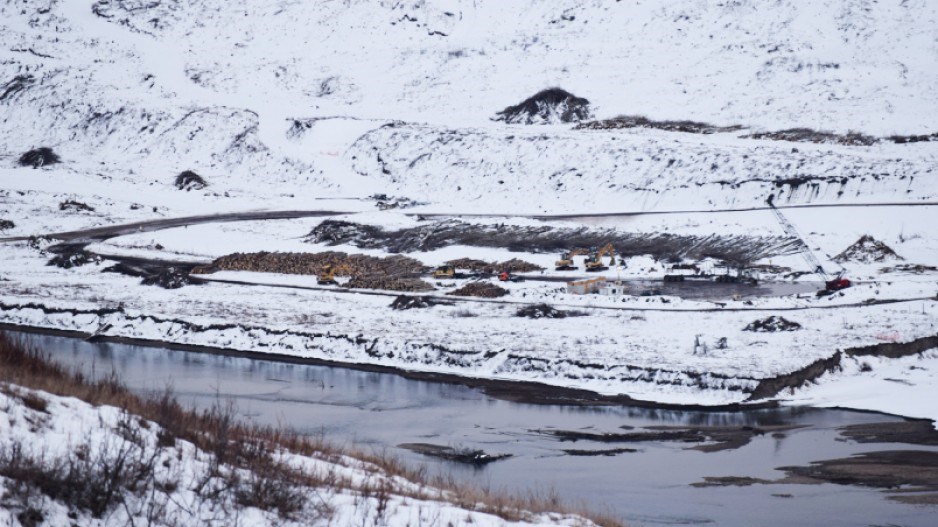Work on Site C was briefly halted on the north bank of the Peace River Friday, but BC Hydro says the issue was related to vehicle safety and not environmental compliance.
On Friday afternoon, Hydro officials confirmed work was temporarily suspended for some construction areas after “series of minor vehicle incidents” that led supervisors to call meetings of both day and night shift workers on the dam project.
“It’s common practice for us whenever there has been a safety incident to review the safety policies with our workers,” Site C spokesperson David Conway said in an email. “After the (second) meeting, work resumed.”
“I just want to be clear that this temporary work suspension was routine, and was related to safety, not the environment.”
Conway could not immediately say how many vehicles were involved, or whether WorkSafeBC was reviewing the safety incident.
The news comes one day after a Vancouver Sun report on potential fines and a federal environmental order related to the project due to sediment and erosion into the Peace River.
In an email, a spokesperson for the Canadian Environmental Assessment Agency said BC Hydro filed a response to CEAA’s notice of intent to issue an order Jan. 5.
“On December 19, 2016, the Canadian Environmental Assessment Agency issued a Notice of Intent to BC Hydro indicating that the agency intends to issue an Order on January 6, 2017 relating to non-compliance with a condition in the decision statement issued for the project,” the spokesperson said.
“The Notice of Intent to issue an Order of December 19 is not a stop work order,” the official wrote. “A stop work order is not being contemplated at this time.”
Construction of Site C is subject to around 150 federal and provincial conditions related to environmental protection. Conway said the initial warning came after a contractor did not have “sufficient erosion and sediment control contingency supplies” at a work site.
“BC Hydro and its contractor immediately took action to ensure sufficient contingency supplies were placed in the appropriate areas on the worksite and we have provided CEAA with confirmation of this.”
“What we would expect from CEAA in the response is they’ve taken the information that we have and they’re fine with that, or there are other things we need to do,” he said in a phone call.
Site C, which has been under construction since mid-2015, would flood the Peace River Valley and generate 1,100 megawatts of electricity the province says are vital to meet future enegy needs. It would be the third dam on the Peace River, one of the largest infrastructure projects in B.C. history, and is controversial for its environmental impacts.
The dam will flood 83-kilometres of river valley, including farmland and sites sacred to local First Nations. Site C was subject to both provincial and federal environmental review before it received B.C. government approval in 2014.
Site C construction crews have faced erosion issues since last year, when the project was warned about sediment in the river, which can impact fish. Crews were also issued warned about a non-functioning air quality monitor on the site.
According to a BC Hydro’s Jan. 6 construction report, work is underway on drainage tunnels as well as cofferdams on the site.




